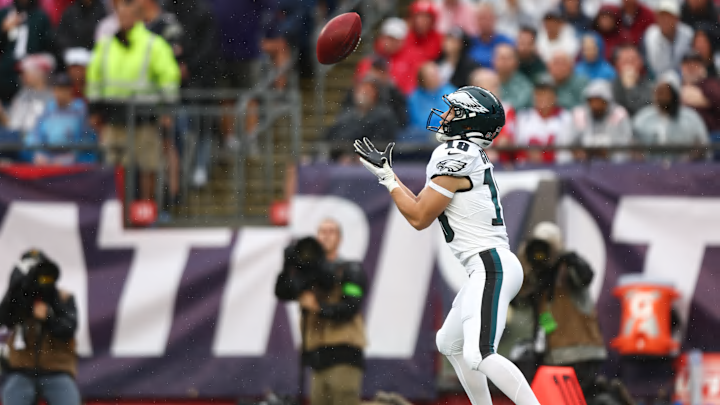Whether it be salary cap manipulation, draft-day trades, or on-field strategy, Philadelphia Eagles CEO and Chairman Jeffrey Lurie has always encouraged his front office and coaching staff to be relentless in pursuit of hidden edges that can help them win football games. It should come as no surprise then, that with the approved new rule changes on kickoffs, Philly's special teams coordinator Michael Clay has likely already begun experimenting with ways to take full advantage of such adjustments.
First things first. Let's get into the specifics.
What are the new kick off rules?
The NFL is adapting a rule set that is very similar to that of the former XFL. The coverage team will be allowed to line up ten players at the opponent's 40-yard line, and the kicker will be positioned behind them at the kicking team's 35. The return team will feature at least seven blockers between their 30 and 35, with at most two returners between the 20-yard line and the goal line.
If the ball lands in the area between the 20 and the goal line and scoots into the endzone, the offense will start at their 20-yard line. If it lands in the endzone or goes out the back, the offense will start at their 35-yard line, which is 10 yards further downfield than before. This should heavily incentivize teams to play for the third option, which is the return. For further explanation and analysis of the new kick-return rules click here.
How will the new rules affect the Eagles?
With the new guidelines starting teams much closer to each other, many have projected that returns could start to look like longer developing run plays. With the previous rules, long speed and tackle breaking ability were the most coveted skills for return specialists. After the changes, we may see a reversal towards players with better vision and gap hitting ability -- in translation, this could mean more running backs.
The primary kick returner in Philly last season was Boston Scott, who is now in Los Angeles with the Rams. This leaves the Birds with a handful of potential candidates to fill that role including veterans Kenneth Gainwell and Britain Covey; with notable rookie additions Will Shipley and Ainias Smith also in the mix.
Texas A&M’s Ainias Smith showing how dynamic he can be with the ball in his hands on this punt return.
— Seven Rounds in Heaven (@7RoundsInHeaven) October 7, 2023
Smith is one of the most explosive SR WRs in the 2024 NFL Draft class. pic.twitter.com/R9bi3EXD3O
Shipley and Smith both have collegiate returning experience. Shipley brought back 35 kickoffs in three years at Clemson, averaging 26 yards per return. The Eagles' 6th round pick Ainias Smith was used both on kickoffs and as a punt returner, reeling in 86 balls with two touchdowns on punt return opportunities at Texas A&M.
As it stands, Shipley and Gainwell are likely candidates to be tasked with kick-return duties to start the season. That would leave Covey and Smith competing for that sixth receiver/punt return role in training camp. It's also fair to ask if there might be a sneaky third name called upon on occasion for kickoffs.
For instance, newly acquired Saquon Barkley was a dynamic return threat at Penn State. He hasn't yet returned a kick as a pro, mainly because he's a starter and too important to the offense, but if the Birds want to shake things up, he provides another option.
The new rules are going to result in far more kicks returned than we've seen in the previous years. Consequently, teams around the league have already started to prioritize bringing in return specialists. The 2024 season will be a fascinating trial run in seeing how the Eagles' Michael Clay and the rest of the league approach and uncover new strategies that are now available before the start of drives.
